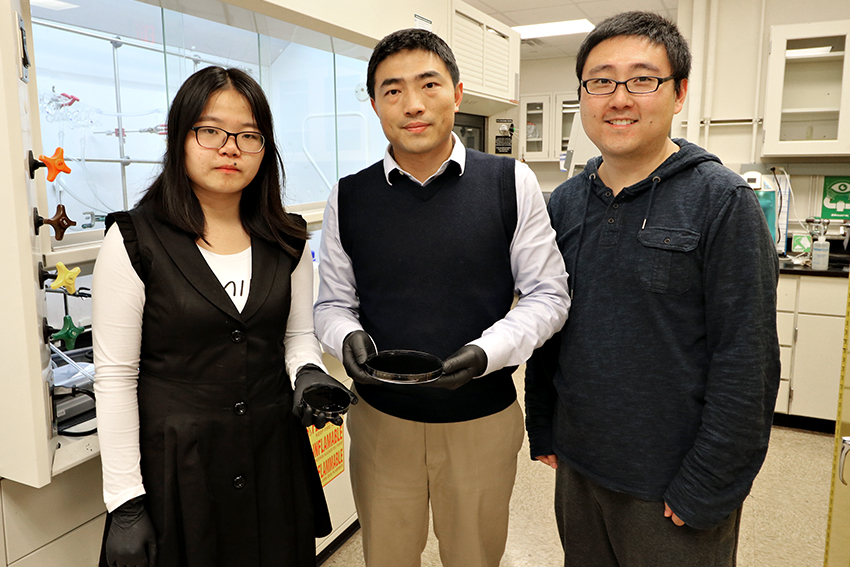According to the World Health Organization, 2.1 billion people around the world lack access to safe drinking water in their homes. A new development at UT may have the ability to change that.
A research team led by Guihua Yu, a professor of materials science in the mechanical engineering department, has found a way to purify water using sunlight and hydrogels, which are highly absorbent networks of polymer chains. The hydrogels are able to both absorb water and harvest solar energy, which is used to evaporate the water. When the evaporated water is condensed back to a liquid, it is more pure because contaminants are left behind in the process. This process is known as distillation.
“(The technology) is for both water purification and seawater desalination,” Yu said. “It can be at a large, global scale or water purification for household needs.”
Yu said his team had already been working with hydrogels when they decided to explore different uses of the technology. Previously, he said, hydrogels were mostly used in biological applications such as skin cosmetic products and tissue engineering. It had yet to be used for environmental or energy applications.
“When I started at UT, we first started to explore how hydrogel materials made of conducted polymers could be used in lithium-ion batteries or capacitors,” he said.
When a new postdoc researcher, Fei Zhao, joined Yu’s research, Zhao brought his experience with using solar energy in water evaporation. Evaporation, he said, is one of the fundamental steps in distilling seawater into drinkable water.
Zhao said the idea to look into how the hydrogels could play a role in water evaporation first came when they were preparing a set of two hydrogels in the lab and left them out over the weekend. When the researchers returned to the lab, one hydrogel was dehydrated and the other was not.
“The only difference (in the hydrogels) was the basic polymer,” Zhao said. “We tried to figure out why there is different evaporation behavior in these gels.”
The two were fascinated by how solar evaporation technology could come together with these hydrogels they were preparing.
Previously, Zhao had worked with graphene, a carbon-based material which had solar-absorbing capabilities. This property was due to the nanostructure of the material, Zhao said.
Hydrogels, on the other hand, are known for their water-absorbing qualities which stem from their hydrophilic, or water-attracting, nature. According to Zhao, it is nearly impossible to squeeze water out of a hydrogel. The research group decided to look into how the nanostructure of the gel could lead to it having similar properties to graphene in harvesting solar energy, and how the hydrophilicity of the hydrogel could be used to apply these properties to water.
While the breakthrough is significant, Yu is looking to build upon his discovery. He wants to further research the specific mechanisms which enable this technology. The research group will also be looking into ways to better the materials.
There are plans to commercialize the technology. This involves scaling up the materials.
“When you scale the materials, we have to see how efficiency will scale along with it,” Yu said.
However, on a household scale, the technology is essentially ready.
“What we tested in lab is relevant to household-scale needs,” Yu said. “We are working with some potential industry (partners), they are interested in commercializing this technology.”
While the researchers still have some work to do, the ability of this new technology to provide safer water shows that what starts here really does change the world.















